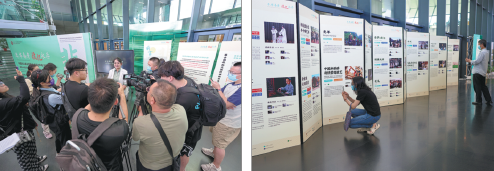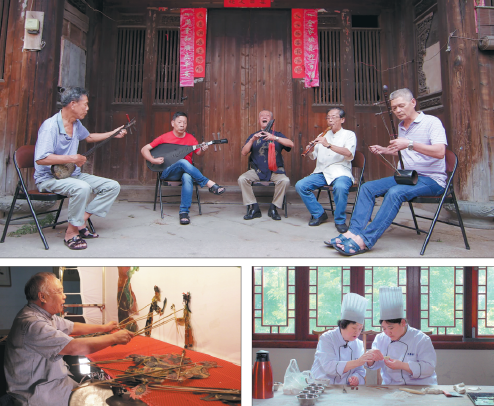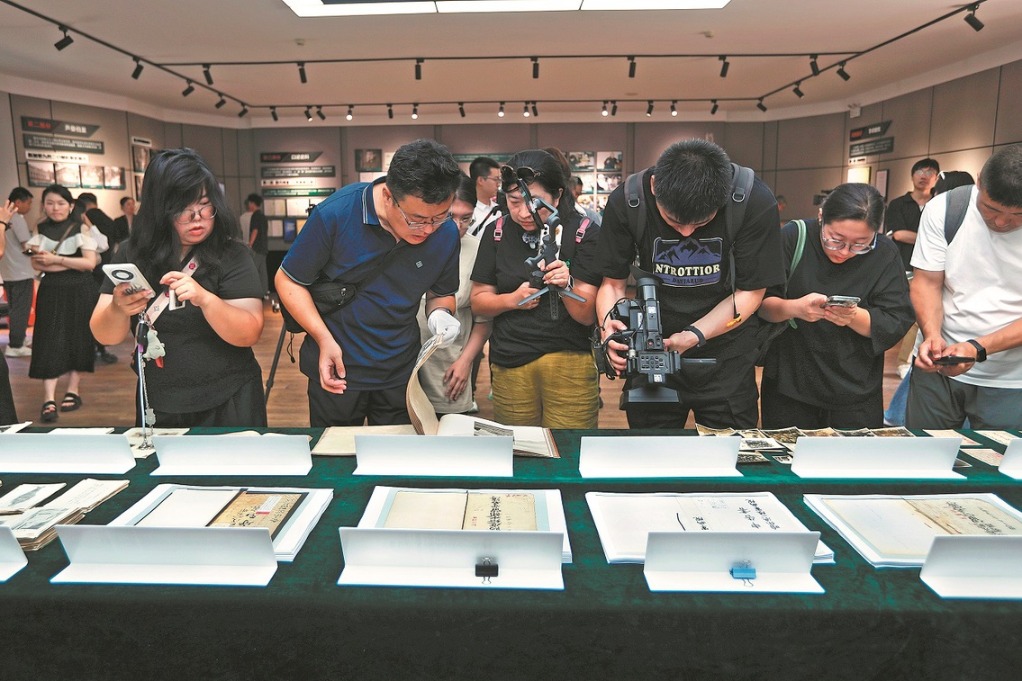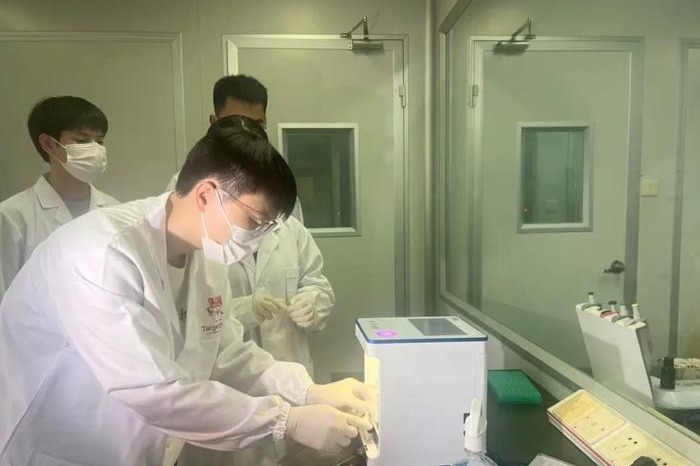A treasured future
Exhibition highlights those who work to keep our heritage alive through a series of documentaries that will shortly be showing at a library near you, Cheng Yuezhu reports.

Time relentlessly passes, but memories can last forever. With this belief, for the past decade the Chinese Memory team at the National Library of China in Beijing has been working to collect and preserve audiovisual records of culture and history.
One of the aspects they have been concentrating on is the country's intangible cultural heritage, especially the items inscribed on UNESCO's Lists of Intangible Cultural Heritage and the Register of Good Safeguarding Practices.
The project to record the stories of inheritors of the nation's intangible cultural heritage in video formats officially began in 2015. And since 2018, special exhibitions have been hosted to present the documentation achievements, along with screenings of the documentaries.
This June, the fifth edition of the exhibition opened at the National Library of China, in celebration of the 20th anniversary of UNESCO adopting the Convention for the Safeguarding of the Intangible Cultural Heritage.
Set in the hallway of the library's north area, the exhibition is readily accessible to all visitors. Anyone ascending the second floor immediately faces a poster of the exhibition.
The designer of the exhibition Yang Lingling has chosen an overall hue of mineral green, a color commonly used in traditional Chinese paintings, for the exhibition in the belief that it both promotes traditional culture and stands out in the library setting.
"It's different to set the exhibition in an open, public space rather than a conventional exhibition hall," Yang says.
"Usually when visitors go to an exhibition, they have to plan in advance and choose a specific time to attend. But there's no pressure for anyone coming to this exhibition. Anyone visiting the library can enjoy the exhibition and learn something about China's intangible cultural heritage."
Race against time
The display boards aligned along the sides of the hallway contain introductions to the exhibition in general and the intangible cultural heritage projects featured in the exhibition. Visitors can watch documentaries about the projects and the inheritors either on the digital screens or on their smartphones by scanning the QR codes.
Tian Miao, deputy director of the library's social education department, introduces the project, which was launched by the Ministry of Culture and Tourism in 2015 to document the inheritors of the nation's intangible cultural heritage.
"This is such a special and essential project. When it was launched, there were more than 3,000 national-level inheritors in China, but 400 to 500 have already passed away. And the average age of the rest is over 70," Tian says.
Each year, intangible cultural heritage protection centers around the country submit lists of the inheritors, and the library, which is entrusted with offering academic support and examining the final products, selects around 200 inheritors for the centers to record.
Apart from the library staff, experts in intangible cultural heritage and documentary filming are also invited to guarantee the quality of the recordings, before the approved video documentation is archived by the library.
Popular appeal
Because some practices are carried out over an extended period of time, it can take one or two years to work with each inheritor. So far, the project has been following up on more than 1,800 inheritors, among which the documentation on 1,040 inheritors has been completed.
"We want to keep an in-depth record about each national-level inheritor, including their practice, teaching, and personal recollections. It's like building a comprehensive audiovisual archive for the inheritors," says Dai Xiaoye, deputy director of the Chinese Memory team.
By participating in the project, Dai says that she has been witnessing and is constantly moved by the behind-the-scenes stories that are often not recorded.
One of the art forms that have been documented is Yueqing thin-line paper-cutting from Zhejiang province. As ornaments on festive lanterns, the paper-cut works feature hundreds of exquisite cuts on tiny pieces of paper and carry a propitious meaning of warding against diseases.
"When we visited Lin Bangdong, the inheritor of the art form, he already had some memory loss and couldn't even remember his own family members sometimes. But when he saw us, he immediately led us to his study and started showing us all his works," Dai recalls.
"If he had used such refined cutting techniques in other professions, he could probably have earned a lot more, but he persevered in the art form, so that we can still see it today."
Alongside the exhibition, the library also hosts offline screenings of the documentaries in its own cinema. Visitors can sign up online for a time slot, during which four documentaries, each 30 minutes long, are screened.
The team initially had concerns that the audience members might get restless watching documentaries about traditional culture, but it soon turned out that their worries were unfounded, based on the feedback they received.
Dai recalls that when the screenings were hosted for the first time in 2018, the team left notes for the audience members to give their ratings and leave feedback, and a particular note from a primary school student moved them all.
"Not only did he give full marks to all the documentaries, he also wrote that, 'I like these documentaries very much and pay tribute to these respectable inheritors and people recording their stories'," Dai says.
"His feedback immediately made it all worthwhile. Actually, we as contemporary viewers want to see these documentaries. Even as short videos prevail, we can still sit down and get to know these valuable stories."
Myriad venues
This exhibition might be one of the most sizable in China, because apart from the national library, around 220 libraries from around the country are simultaneously hosting the exhibition in their own venues.
The idea of hosting the exhibition in multiple libraries simultaneously was conceived last year. The organizers thought that despite hosting it at the National Library and online, there remains a large potential audience unexposed to these resources.
Through their own library system, the team then started recruiting and inviting interested libraries around the country to host the exhibition at their own venues. More than 180 libraries joined last year.
"Representatives from many regional libraries got in contact with us, and they gave us active and warm feedback," Dai says.
"We can't offer any funding to them. All we can offer are the exhibition designs and video resources. But these libraries are very keen in participating and organizing their own sub-exhibitions. This year when we started the recruitment once again, many libraries immediately signed up."
The national library is also collaborating with the Beijing MTR Corp to stage a series of nonprofit cultural events, including bringing the exhibition to some metro stations in the city.


Today's Top News
- Meet again? Putin says: Next time in Moscow
- Zelensky to meet Trump in Washington on Monday
- Wang Yi to visit India from Monday
- Trump, Putin tout 'productive' Alaska talks without apparent breakthrough
- A year's rainfall in a single day
- Negotiation the only way out for peace in Ukraine: Editorial flash






























